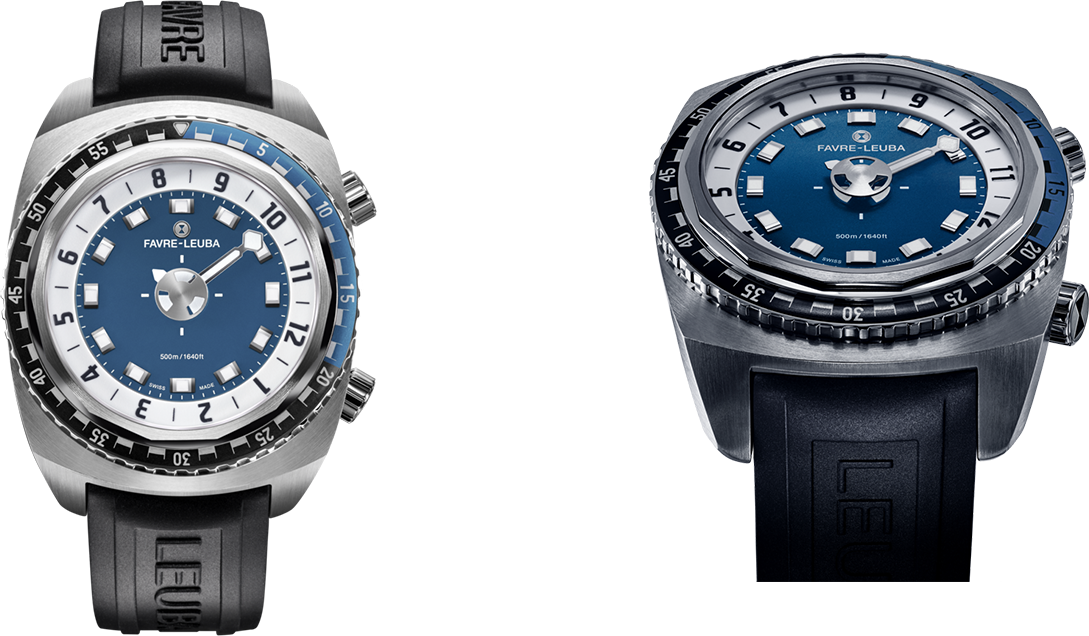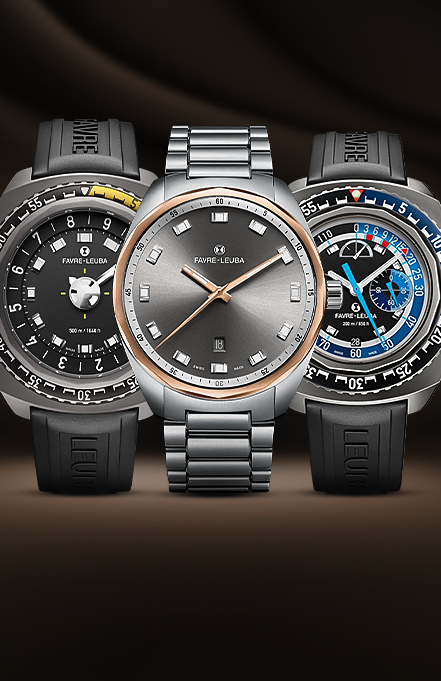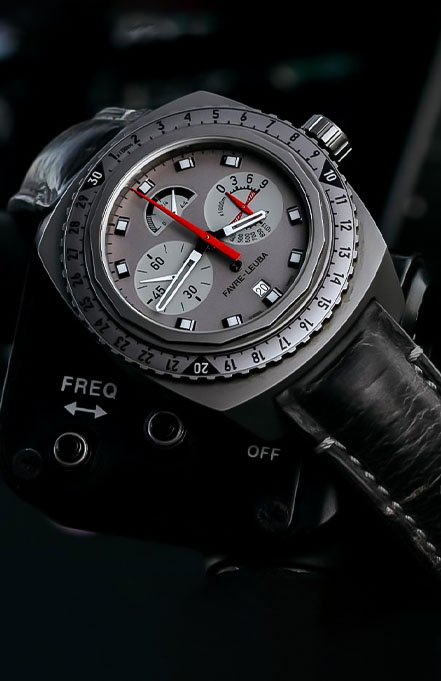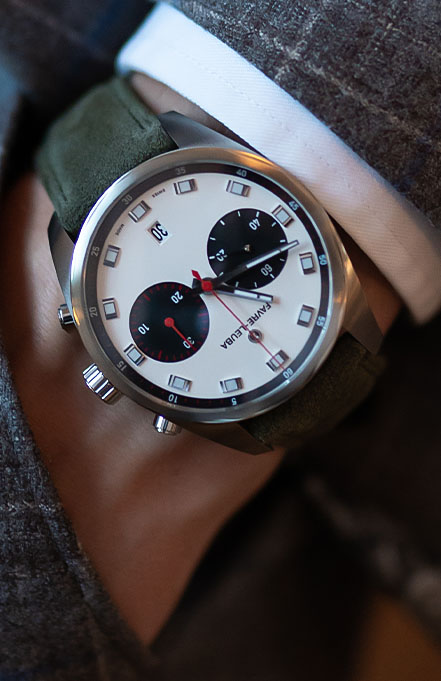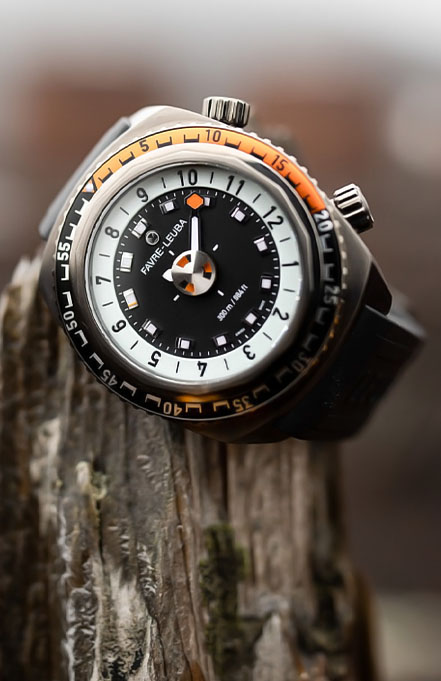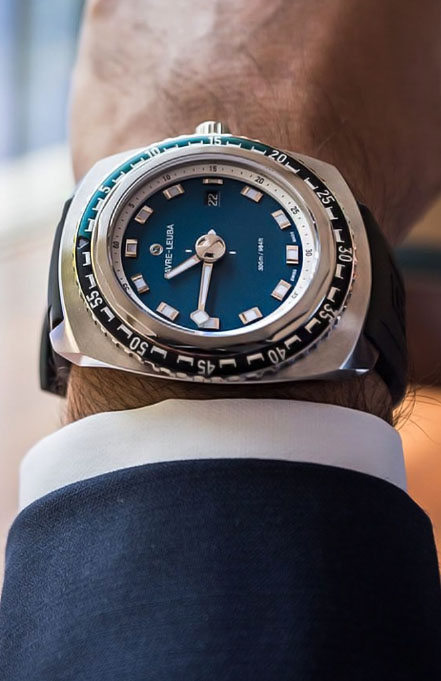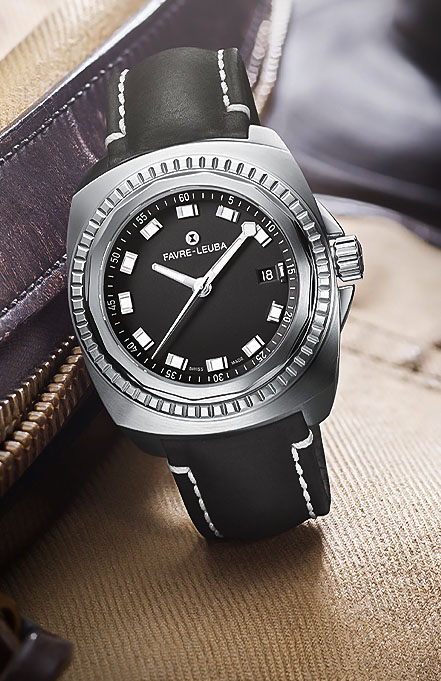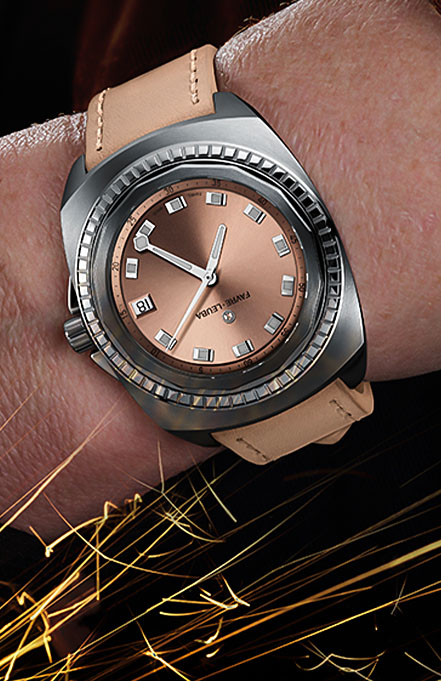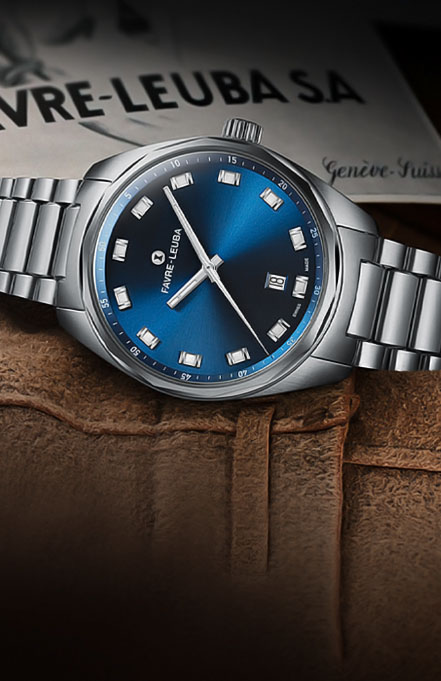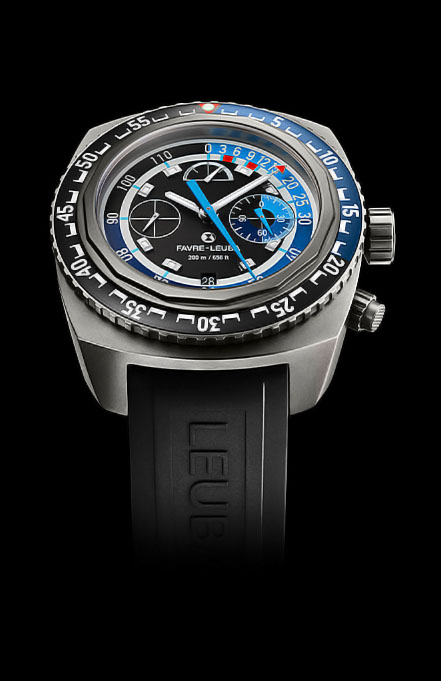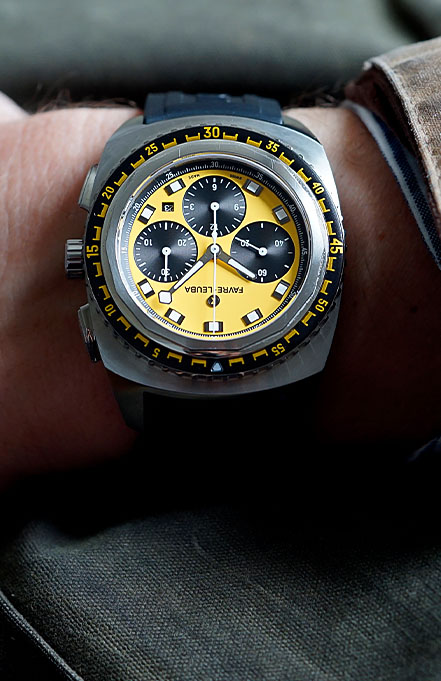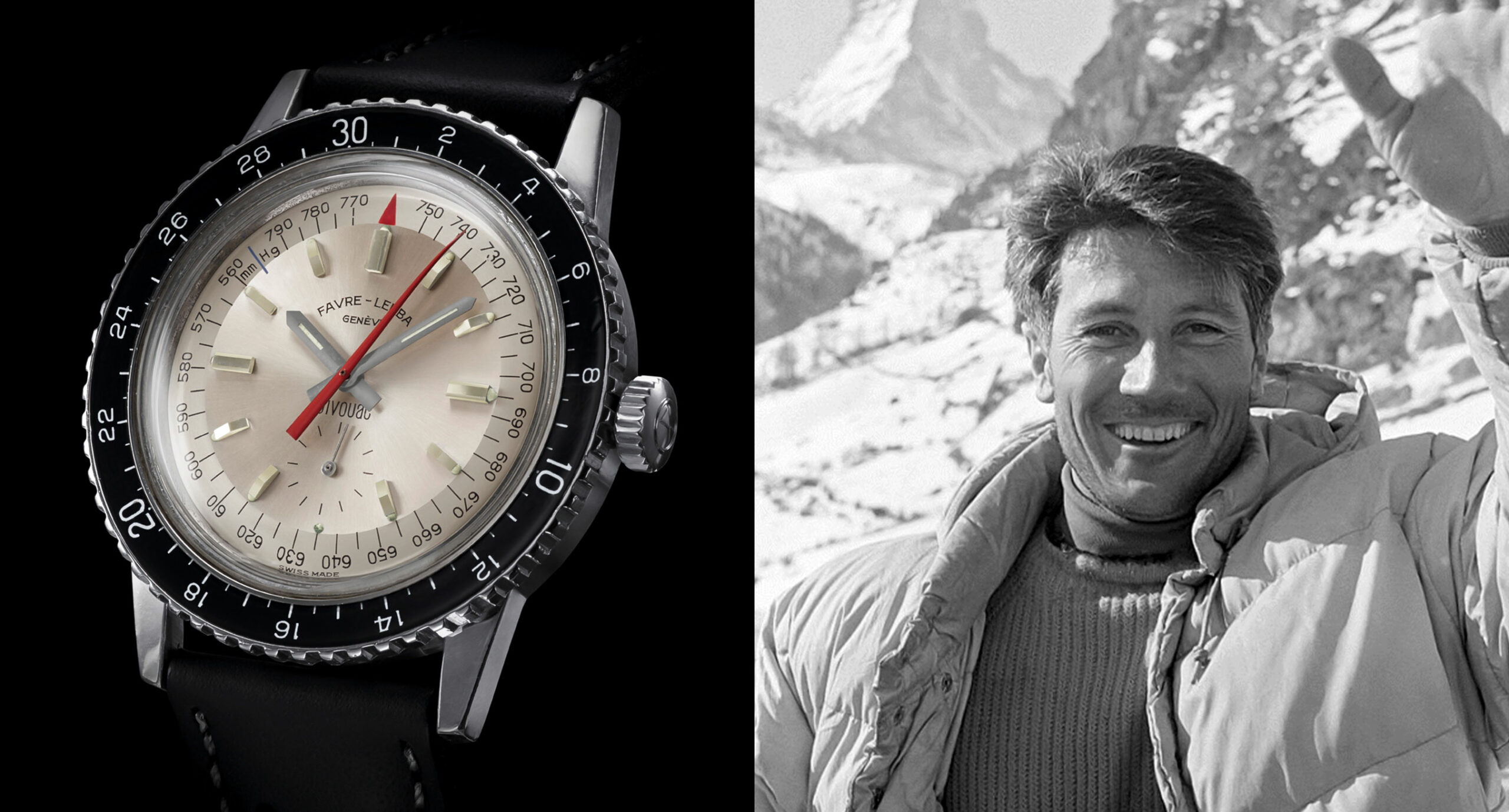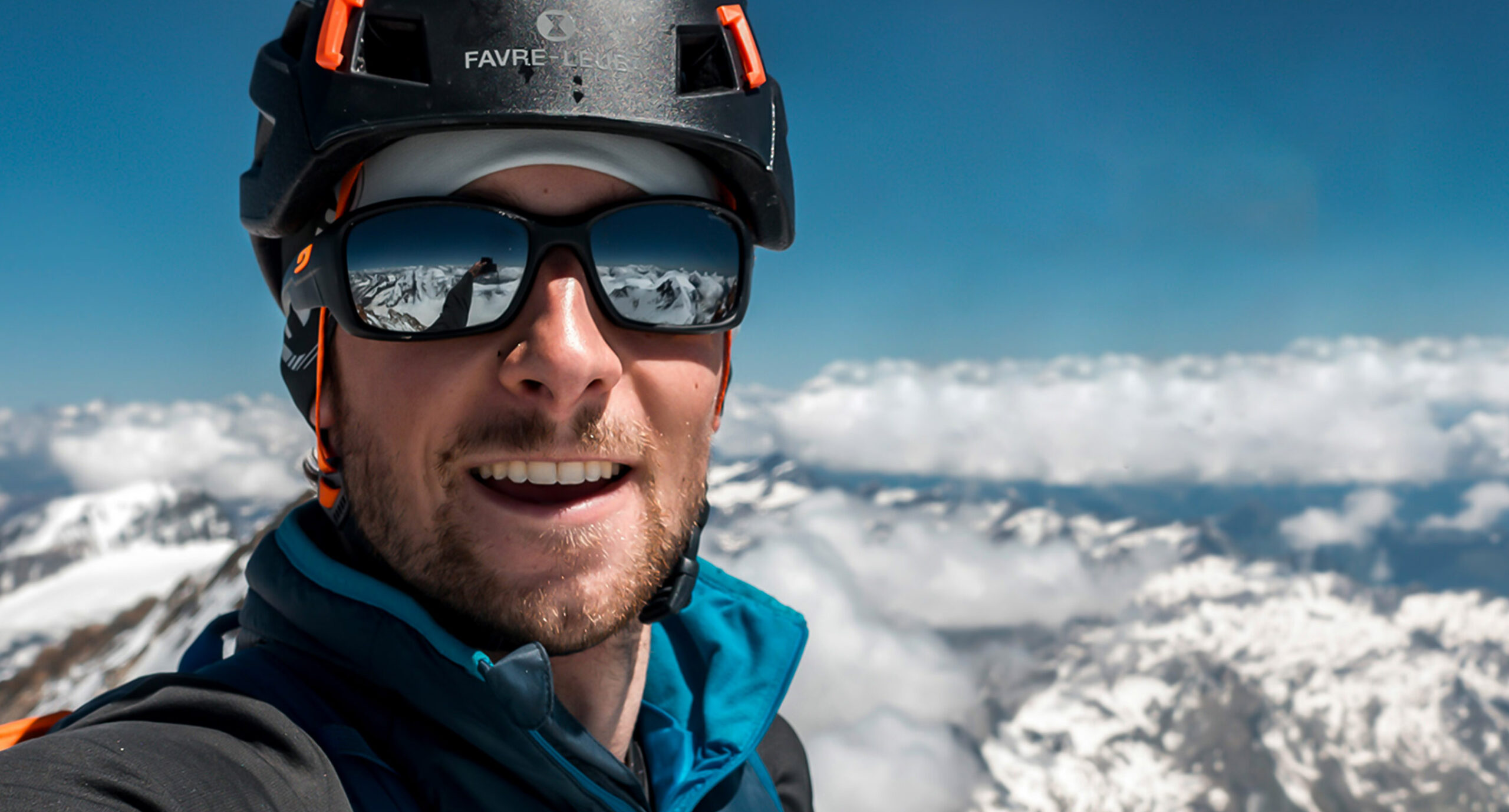Earlier this year, I found myself flying to Zurich to meet the management team of one of Switzerland’s oldest watch-making companies, Favre Leuba. It was to provide a watershed moment in the evolution of the Arctic Mission.
Watch-making and exploration became closely entwined when accurate time-pieces provided the key to establishing longitude, and therefore one’s position on the surface of the Earth. World-renowned explorer Captain James Cook was one of the first navigators to use a time-piece at sea to establish longitude. He was only a 10-year-old when Abraham Favre was registering himself as a watchmaker in 1737.
And randomly, in my research some time ago for an article about the dependence on watch-makers by explorers, I’d clocked that Favre Leuba’s Bivouac wristwatch, launched the year I was born (1962), was the first mechanical watch ever to incorporate an altimeter and aneroid barometer thereby creating an ‘indispensable companion’ for explorers. I’d also noted legendary polar explorer Paul-Emile Victor had been one of the first to deploy this wristwatch on one of his Antarctic expeditions … and one of my heroes, Walter Bonatti, had worn it while summiting the Grandes Jorasses in the Alps.
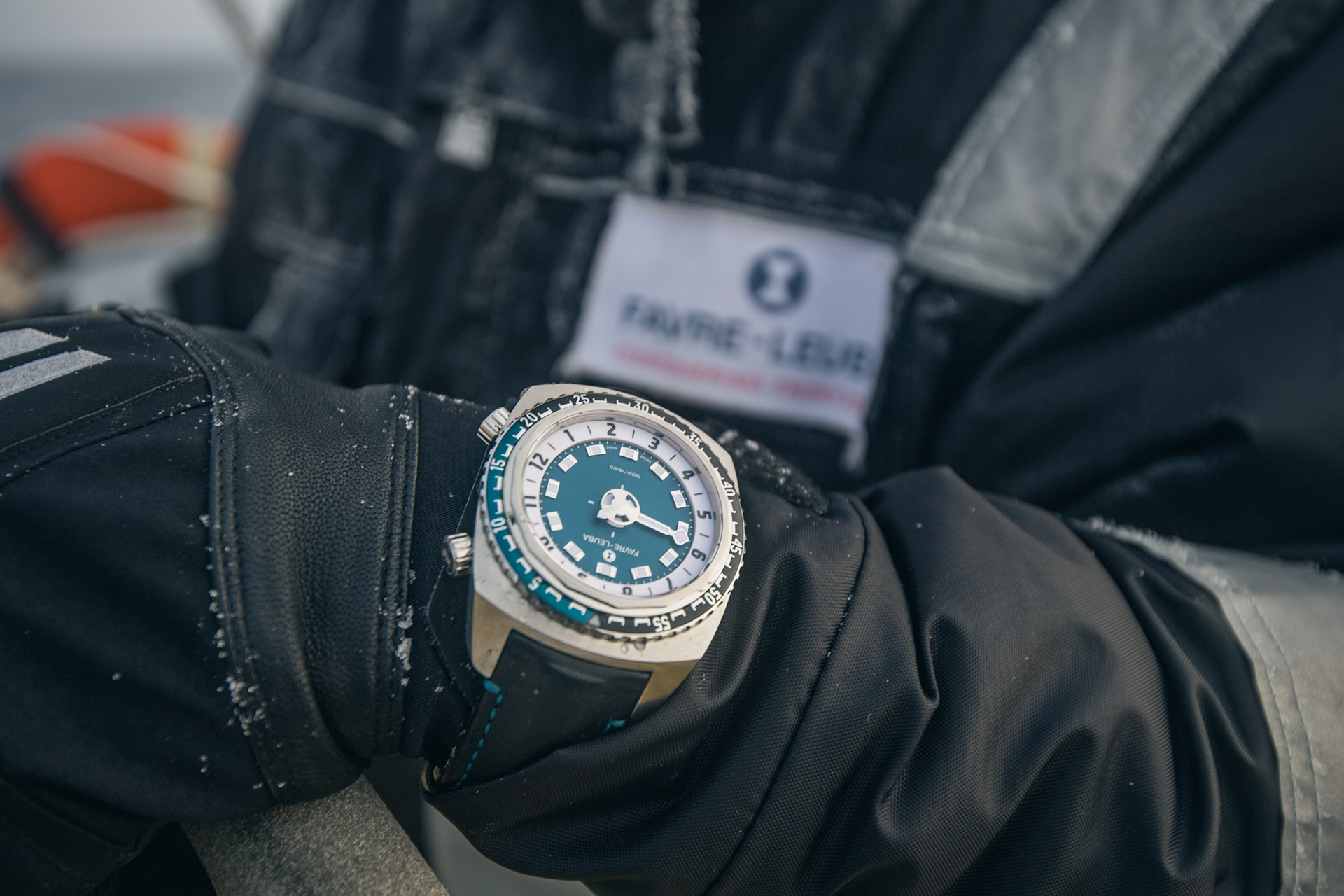
So how come I was flying in to meet Favre Leuba now? Well, it’d been something of a life journey to get to that moment …!
In 2003, I’d trekked solo across the sea ice of the Arctic Ocean, without resupplies or outside assistance, from Canada’s northern coast to the North Geographic Pole. Or did I?
Well, I did travel alone from the Canadian coast to the Pole, but ‘trekked’? Across a continuous frozen surface of sea ice? No.
Of the 850 hours spent travelling northwards over the course of my 64-day endeavour, I’d had to force myself into an immersion suit and swim across numerous stretches of open water between the floating plates of solid seawater, more commonly known as ice floes. I’d spent over 30 hours dressed in this way sploshing about in liquid seawater, rather than on top of its frozen upper surface. Without this ‘amphibious option’, which included an inflatable raft for my sledge, I’d have run out of food long before reaching the Pole, trying to find a way to trek on skis around the ever-increasing areas of open water.
This unique experience set me thinking. How much seasonal sea-ice loss is there across this ocean? And what’s causing this loss? Aside from preventing coast-to-Pole expeditions on foot, more significantly, how might the lands and oceans in the rest of the northern hemisphere be affected by the loss of this huge protective heat shield?
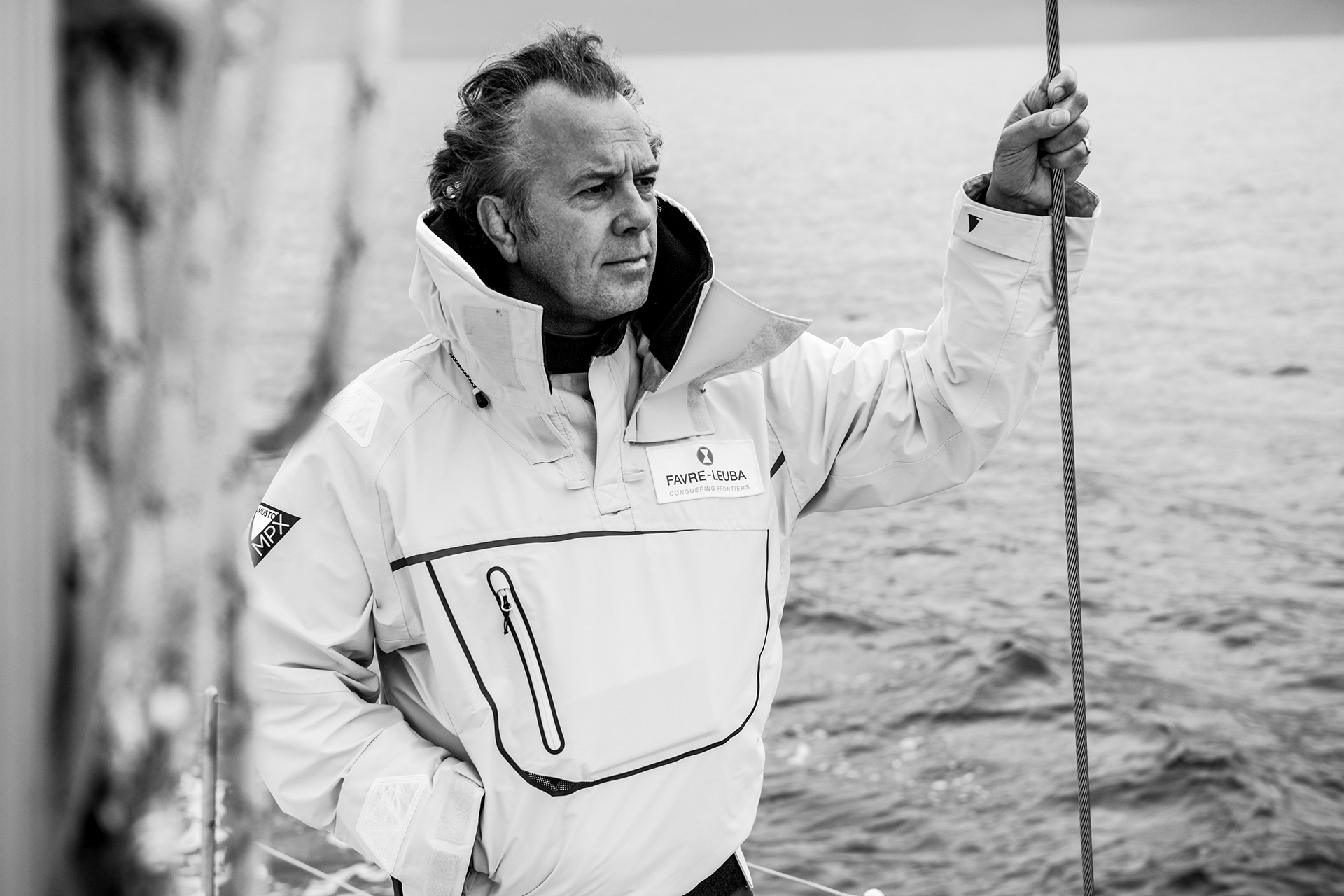
These questions set in motion a programme of scientific exploration I’d led on the Arctic Ocean, the Catlin Arctic Surveys (2008-12). We’d hooked up polar field scientists with experienced explorers and guides and had set up one of the very few sea-ice research facilities in the world. We investigated sea-ice thickness to contribute to sea-ice loss forecasts. We studied the effects of ocean acidification in polar waters on marine life; and we measured the temperature, salinity, flow direction and flow speeds of the distinct layers of water under the sea ice.
During this momentous project, I realised something fundamental to my life’s work as an explorer on the Arctic Ocean. I now felt I knew enough to take the next step. For me, the environmentalist’s ‘precautionary principle’ was the catalysing argument. Science goes on, relentlessly reducing the level of uncertainty in our understanding of a natural science subject. But my concern was that commercial interests and voter-needing policy-makers too often cite the need for yet more science before taking an actively protective position when it comes to the environment.
I don’t believe we have the luxury of any more time to reduce the uncertainty to an unspecified degree. Indeed, I feel I know enough about the current situation and the highly likely future for the region’s marine wildlife. I needed to act now. I wanted to provide a catalysing leadership role while encouraging the scientific work to continue to build the evidence-based case for what I believe is now necessary and achievable … effective comprehensive protection for the marine wildlife living in the international waters around the North Pole.
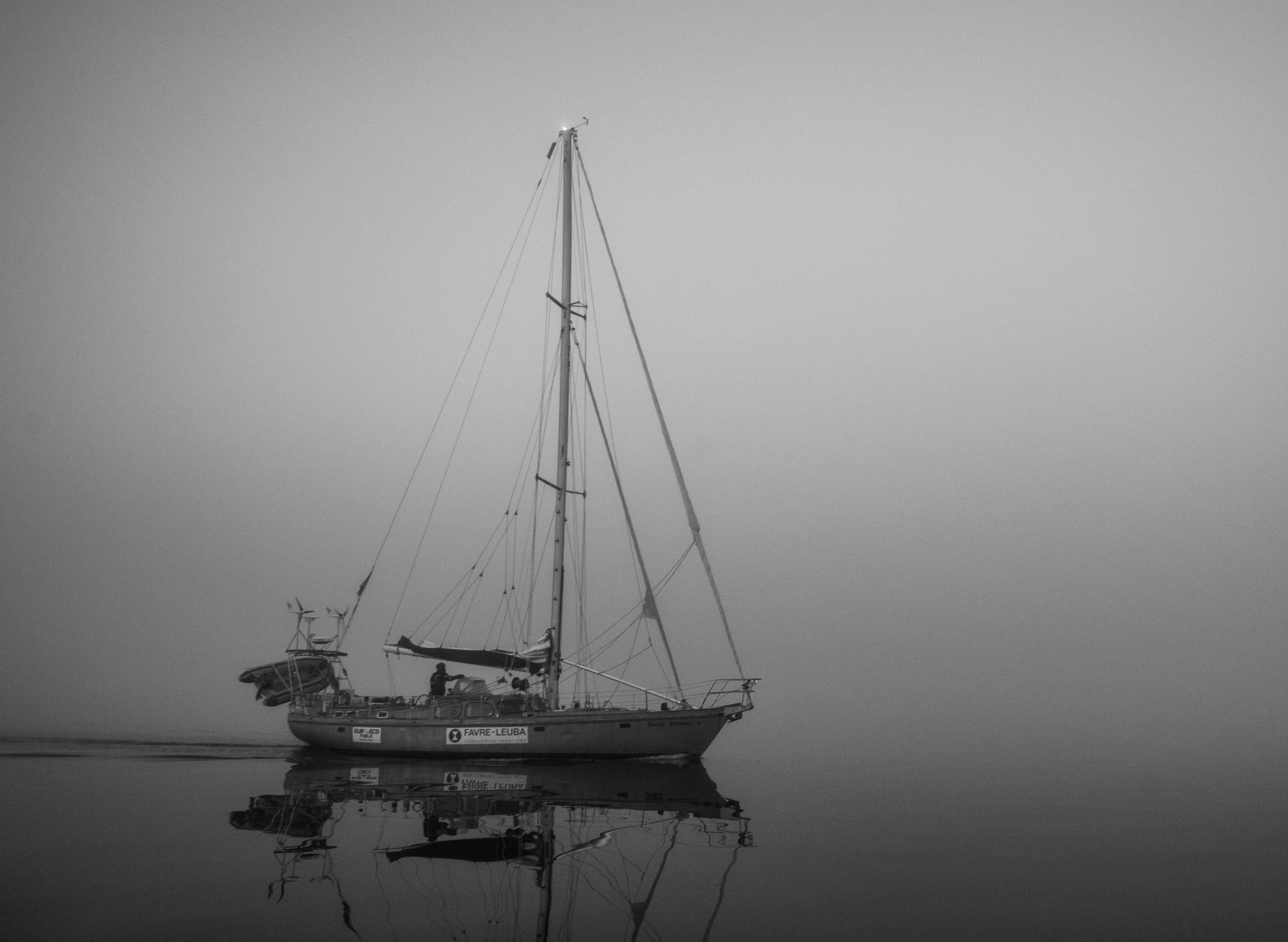
That decision to act saw me today in Zurich. To discuss support for my voyage of discovery, and ultimately protection – Arctic Mission. Arctic Mission was conceived two years ago, and its first endeavour, of a planned series over the next decade, intended to demonstrate with its two ice-strengthened 50-foot sailing yachts, how almost half the 3 million sq km of international waters around the North Pole are now ice-free and therefore navigable by surface vessels in the summer.
The reduction of the region’s summer-time sea-ice cover, as observed over recent decades by scientists using satellites, is removing the natural physical shield that has protected these waters throughout recorded history, perhaps for more than 130,000 years. But it’s now possible for military vessels and commercial ship owners involved in fishing, tourism, goods transport, and mineral extraction, to take advantage of this newly accessible ocean.
With one of the world’s least explored and most vulnerable ecosystems at stake, our team was to conduct vital research into the animals, plants and micro-organisms that have evolved to survive in these uniquely cold, dark, and hitherto ice-covered waters.
To give you an insight into the vulnerability of the animals here, the female Greenland Shark lives at a depth of 2 kilometres, does not reach breeding age till she is 150 years old, and may live in excess of 450 years. So there are sharks down there born while Henry VIII was king of England. You may imagine how slowly, if ever, they would recover from uncontrolled deep-sea fishing practices.
Believing it now an urgent global priority to develop international policy measures to protect this body of international water before its super-vulnerable marine life and ecosystem are critically disrupted, damaged or removed by shipping-based activities, I presented the objectives and merits of the Arctic Mission to Favre Leuba.
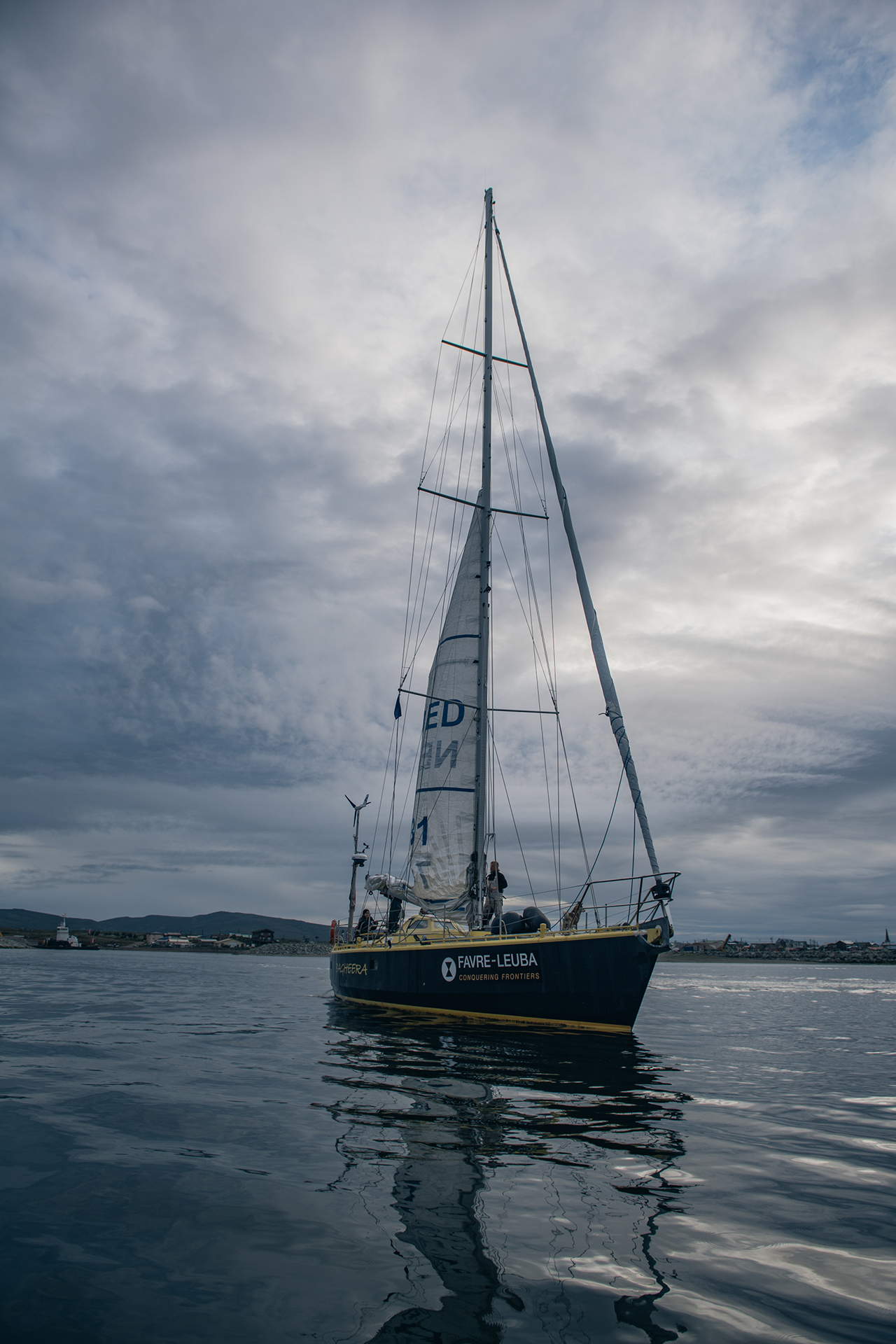
They listened intently. They probed our operational plan. They shared our vision for an international protective treaty secured through the United Nations. They could see the role of time in all that we aspired to do.
Later that day, Favre Leuba confirmed it was to become Arctic Mission’s primary sponsor. And it was this decision that enabled Arctic Mission to set sail from Nome, Alaska, towards the North Pole in August of 2017 …to start a journey that as Favre Leuba summarises in its tagline, will entail conquering frontiers. In this case, it meant undertaking this arduous that will present many physical, mental as well as emotional frontiers but is nevertheless an essential journey to witness the changes taking place in the Central Arctic Ocean. Soon, we can together experience what this journey showed the sailing team…
Favre Leuba collection:
The watches from the Raider and Chief lines from the current Favre Leuba collection are inspired by the brand’s own legendary watches. Practical functionality, extreme precision, and outstanding reliability make each of these watches the ideal companion for those who seek to conquer frontiers, at the highest altitudes or in the deepest depths, across all latitudes and longitudes, and in the freezing cold or sweltering heat.
